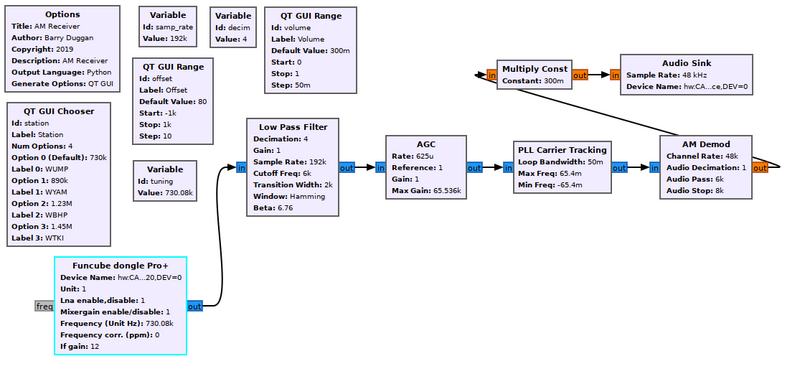PLL Carrier Tracking: Difference between revisions
Jump to navigation
Jump to search
No edit summary |
(add Example Flowgraph) |
||
| Line 18: | Line 18: | ||
== Example Flowgraph == | == Example Flowgraph == | ||
This flowgraph shows the use of a PLL Carrier Tracking block in an AM receiver. | |||
[[File:FunCube_AM.png|800px]] | |||
== Source Files == | == Source Files == | ||
Revision as of 13:04, 28 October 2019
Implements a PLL which locks to the input frequency and outputs the input signal mixed with that carrier.
This PLL locks onto a [possibly noisy] reference carrier on the input and outputs that signal, downconverted to DC
Parameters
(R): Run-time adjustable
- Loop bandwidth (R)
- The loop bandwidth determines the lock range and should be set around pi/200 2pi/100.
- Max freq
- Maximum frequency of the carrier in radians per sample
- Min freq
- Minimum frequency of the carrier in radians per sample
Example Flowgraph
This flowgraph shows the use of a PLL Carrier Tracking block in an AM receiver.
Source Files
- C++ files
- TODO
- Header files
- TODO
- Public header files
- TODO
- Block definition
- TODO
